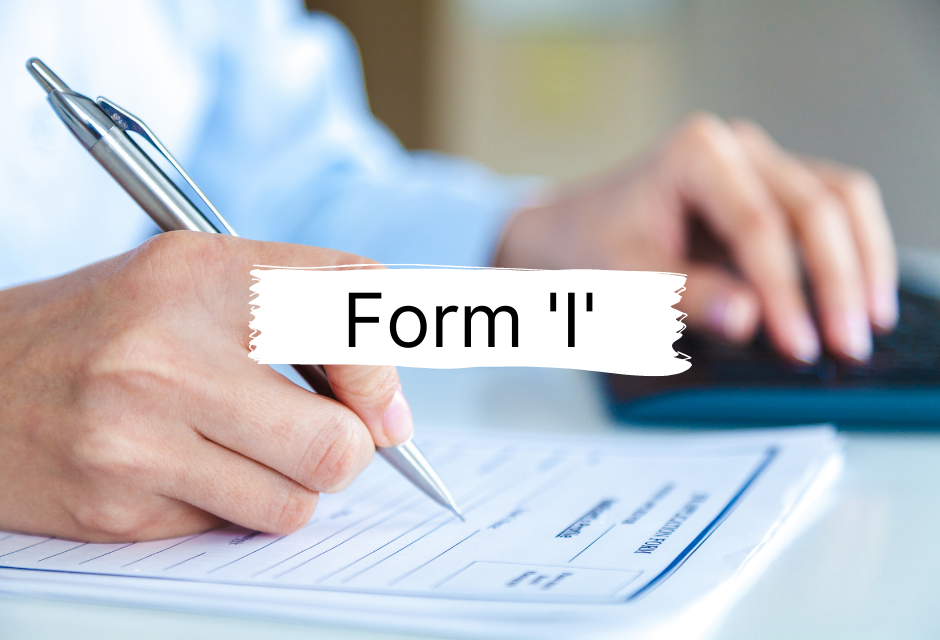Every employee who has served more than 5 years with the same employer is liable to receive gratuity from him post retirement or after resigning from the job irrespective of the reason. These rules have been established in the Payment of Gratuity Act, 1972 by the Central government of India. In case the employee dies unexpectedly, his heir can claim this amount by filling the form k and submit it to the concerned authority. Let us understand about form k through this article. We have covered the following points in this blog -
- What is form k?
- Who can use form k?
- What if a beneficiary is added in gratuity form?
- How to fill out the form k?
- Conclusion
- How can Deskera Assist you?
- Key Takeaways
What is Form K?
According to available information on the web, the form k is considered to be an application given by the legal heir of an employee who has passed away. This form comes under the Act of Payment of gratuity Act formed in 1972. According to this, a lump sum payment should be made by an employer to an employee for the job services he has provided to the company.
As per the information from available sources, after the enactment of Payment of Grautity Act, 1972, gratuity payment has become a compulsory process for the employers for their employees. In case of non application of gratuity act, it is possible for an employee to claim gratuity under the terms of contract of employment. With form k, the child of the deceased employee can make a gratuity application to the employer post his death and claim the payment.
Who can use form k?
If the employee fails fill nominee in his gratuity form n or other form he is using, then his offspring can use the form k to claim the gratuity amount post the demise of his parent. It implies that a legal heir can make use of this form if the employee has forgotten to include any nominee in the gratuity form. Hence, a salaries person should make sure to nominate the right beneficiaries before his gratuity proceeds. The heir should fill this form k within one year of the date of gratuity if he wants to claim the amount from the employer.
What if a beneficiary is added in gratuity form?
In the event of death of an employee, as per the available information, the rules related to gratuity payments are quite similinar to the governing rules about EPF benefits. If the employee has bequeathed his EPF proceeds to an individual who is not amongst the family members, then the family does not have any right to entitle the proceeds contemplated under the EPF scheme. Now, in regards to gratuity proceeds, the nominee can receive the funds on behalf of the legal heir of the deceased employee. Once he has recieved them, he is legally bound to pay the total amount with a will or general succession proceeds.
How to fill out the Form K?
If the child does not want to claim the gratuity of his deceased parent employee thorugh will or other way as stated above, then he choose to go with filing form k on the government website. Here are the steps to fill the form k by the legal heir of the employee -
- The application should be made by the legal heir of the deceased employee
- He should address it to the company owner. The individual must write the name of the company along with the establishment’s address in this section
- On the next line he should make a genuine request to the employer and state that he is the son / daughter (legal heir). He should mention employee name and his date of death. Further he should state the reason of writing the form k application which is absence of nominee in the gratuity form
- In the next statement, the child must mention the amount of gratuity payment that the ex-employee was supposed to receive after retirement along with date. In case the employee had resigned from the employer’s office, there should be a specific mention of the date he retired
- He should mention the number of years done by the ex-employee with the employer
- In case the employee was not working with the company due to severe illness or some disablement in the work tenure, then the date from which it was followed must be included in the letter
- He should include the necessary particular required in the form k by filling in the details which are given below -
|
1. |
Name of applicant legal heir. |
|
2. |
Address in full of applicant legal heir. |
|
3. |
Marital status of the applicant legal heir
(unmarried/married/widow/widower) |
|
4. |
Name in full of the employee. |
|
5. |
Relationship of the applicant with the employee. |
|
6. |
Religion of both the applicant and the employee. |
|
7. |
Date of appointment and total period of service of the employee. |
|
8. |
Department/Branch/Section where the employee worked last. |
|
9. |
Post last held by the employee with Ticket or Serial No., if any. |
|
10. |
Total wages last drawn by the employee. |
|
11. |
Date and cause of termination of service of the employee (death or
otherwise). |
|
12. |
Date of death of the employee and evidence/witness in support thereof. |
|
13. |
Total gratuity payable to the employee. |
|
14. |
Percentage of the gratuity claimed. |
|
15. |
Basis of the claim and evidence/witness in support
thereof. |
8. In the second part of the form k, the legal heir of the employee must self-attest that the all the above mentioned details are true
9. In the next section, the legal heir of the deceased employee must make the necessary payment required in filing this form k in cash or crossed bank cheque at the center.
10. As the fees required for form k to be given by the legal heir is under thousand rupees, he should request the employer to clear gratuity payments by postal money order to the address mentioned by him at the start of this letter. With technology available today, the heir can also ask the business owner to do an online transfer, NEFT or use an application if possible.
The form k should mention the date and place of when it is filled by the child while claiming the gratuity payment.
The legal heir should duly sign the form or cast the impression of the thumb on the bottom right corner of form k before submitting the application.
Conclusion
A legal heir of the deceased employee must take the right steps to fill the form k if he wants to claim the gratuity emount from the ex-employer within a month of the gratuity date. He should fill all the details of this form properly along with submitting the nominal fees to ensure the amount is deposited by the employer in his account after the unexpected demise of his parent employee.
How can Deskera Assist you?
Deskera People helps digitize and automate HR processes like hiring, payroll, leave, attendance, expenses, and more.
Simplify payroll management and generate payslips in minutes for your employees.
In addition to a powerful HRMS, Deskera offers integrated Accounting, CRM & HR Software for driving business growth.
Check out our product video below:
Key Takeaways
- The form k can be filled by the legal heir of an employee after his demise to claim the gratuity amount from the employer within one month of the gratuity date
- It can be done only if the employee has forgotten to include the name of the nominee in his gratuity form. If a beneficiary is included in the gratuity form, then it is the duty of the the beneficiary to deposit the amount in the legal’s heir’s account upon receiving it from the employer.
- The legal heir must fill the form k details by giving information about the position,company in which the employee worked, date of demise, date of retirement or date of resignation
- He should specify the gratuity amount that he is claiming from the employee in this form and request for it to be sent to the address mentioned in the form. The legal heir must request for a cheque, cash or any other method of money transfer to ensure the gratuity amount is given by the employer
- He should request for this amount by properly filling the form along with date and place. The legal heir must sign the form and if not possible, he should give a thumb impression on it before sending it to the employer.
Related Articles












